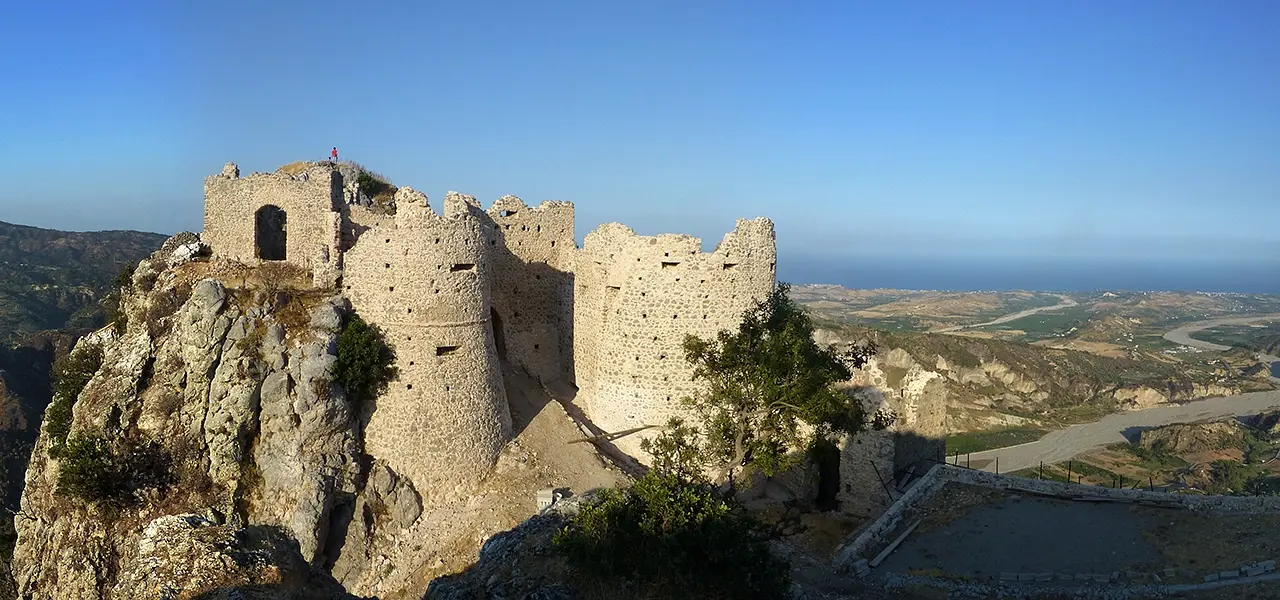

Mount Consolino (m 701) and the Norman castle of Stilo
A rocky bastion topped by the picturesque ruins that hark back to the events of the Great Count Roger



Where

A mountain that does not go unnoticed
Mount Consolino (m 701) is the striking rocky mass that stands out against the green of the middle Stilaro valley. Around the mountain gravitate the towns of Stilo (m 386), Bivongi (m 270) and Pazzano (m 460). The historic center of Stilo occupies one of the shelves that slopes gently to the southwest. Bivongi, lies by the Stilaro River, which bypasses the relief from the north. Pazzano lies in an open saddle between Consolino and Mount Stella. From the summit, the panorama is full horizon: on the coast, from Capo Spartivento to Crotone, with the undulations of the first hinterland; upstream, the verdant Serre ridge with peaks rising toward Mount Pecoraro (m 1423), from which radiate valleys whitened by waterfalls.
From Stilo one ascends to the Norman Castle.
Given its strategic position, Consolino was certainly colonized by the Western Greeks, but it is to theByzantine era that the most significant presences date, Basilian monks who settled in the mountain's numerous caves. Tiny religious settlements, the so-called 'laure', often consisting of a single room, sometimes frescoed. Sixteen are counted, the most important of which is the Cave of St. Angelo. From the Norman period remain on the summit the ruins of the castle built by Roger II, an imposing rectangle of walls with towers and gates. The golden age of the mountain, however, will be from the 15th to the 19th century with the exploitation of the metalliferous veins for the benefit of the iron and steel workshops in the surrounding towns.
An island of limestone in a granite setting
Consolino, together with nearby Mount Mammicomito (m 1047), stands out as an island of clear limestone rocks in the setting of the Calabrian Serre, which instead are mostly granite. So instead of the soft lines of the inland ridge, cloaked in forests and grasslands, serrated ridges, jagged rocks, bizarre cliffs, expanses of boulders and more generally karst manifestations, such as caves and deep erosions, appear. A scenario, poor in surface water, precisely because of its geological nature, where flora adapted to the arid environment also contributes to the fascinating ruggedness of the places.
Enter the Map of Italy's Undiscovered Wonders and find treasures where you least expect it... Inspire, Recommend, Share...
The Map thanks:
PSC 2014-2020 del Ministero del turismo - Avviso “Montagna Italia” - Progetto le Montagne del sole - Codice CUP J38J22000450008


